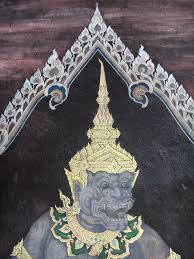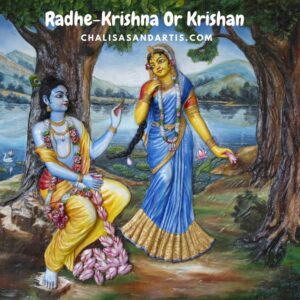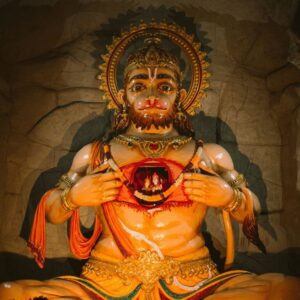Analysis in English and Hindi
INTRODUCTION
Shiva Linga, an iconic representation of Lord Shiva, holds a paramount place in Hinduism. It is a sacred and potent symbol that embodies the divine essence of Lord Shiva, the Supreme Being. The word “Linga” in Sanskrit means a “mark” or “symbol,” and the Shiva Linga symbolizes the eternal, formless, and unchanging nature of the Divine. This article delves into the profound significance of the Shiva Linga in Hinduism, exploring its symbolism, rituals, and spiritual importance.
Here are the Details You Should Know About Shiv Ling
Significance of Shiva Linga in Hinduism
Symbolism of Shiva Linga: The Shiva Linga represents the formless and infinite nature of Lord Shiva. Its shape, often resembling an ellipsoid or an ovoid, symbolizes the unmanifested aspect of the Divine, which is beyond comprehension. The upward-pointing apex signifies Shiva’s dynamic or creative energy (Shiva), while the base represents the feminine or receptive energy (Shakti). Thus, it signifies the unity and balance of the dual cosmic forces that bring about the process of creation, preservation, and dissolution in the universe.
Divine Energy: Worshipping the Shiva Linga is an act of connecting with the Divine energy that permeates the entire cosmos. Devotees believe that the Linga acts as a medium to access the boundless spiritual energy of Lord Shiva. This spiritual communion helps seekers attain spiritual strength, courage, and wisdom, empowering them to face the challenges of life with a sense of purpose and inner harmony.
Auspiciousness and Purity: The Shiva Linga is often crafted from sacred materials like crystal, stone, or metal. It is believed that these materials possess inherent spiritual qualities and vibrations that resonate with the Divine. As devotees offer water, milk, honey, or other sacred substances during worship, it purifies the Linga and the surroundings, signifying a symbolic purification of their minds and souls.
Jyotirlingas – Manifestations of Cosmic Light: The twelve Jyotirlingas scattered across India are revered as the self-manifested forms of Lord Shiva. Each Jyotirlinga radiates cosmic light, representing the infinite power of Shiva. These sacred shrines hold immense spiritual significance, and devotees believe that visiting them and offering prayers can grant blessings, liberation, and spiritual enlightenment.
Spiritual Practice: The ritual of “Abhishek,” pouring water or other offerings over the Shiva Linga, holds immense importance in worship. It is a profound act of devotion, surrender, and detachment from material desires. Through Abhishek, devotees seek to cleanse their hearts of impurities and ego, fostering a deeper connection with the Divine.
Unity in Diversity: The Shiva Linga transcends boundaries of caste, creed, and social status, embodying the principle of unity in diversity. It signifies that the Divine is all-encompassing and impartial, embracing all living beings with unconditional love. The worship of Shiva Linga promotes unity and harmony among people, transcending societal divisions.
Representation of Cosmic Pillar: According to Hindu mythology, during a cosmic event, Lord Shiva appeared as a fiery Linga from an endless pillar of light. This divine manifestation signifies Shiva’s omnipresence and infinite nature, emphasizing that the Supreme Being is beyond human comprehension and exists everywhere.
As the Destroyer and the Transformer: Lord Shiva is revered as the “Destroyer” in the Holy Trinity, along with Brahma, the Creator, and Vishnu, the Preserver. The Shiva Linga symbolizes the eternal cycle of creation, preservation, and dissolution, underscoring the transformative nature of life. It encourages individuals to embrace change, let go of attachments, and seek spiritual growth through life’s ups and downs.
Symbol of Fertility: In some Hindu traditions, the Shiva Linga is associated with fertility, symbolizing the generative power of the Divine. This aspect represents the potential for creation and procreation in the material world and invokes blessings for a fruitful and prosperous life.
Divine Union: The Shiva Linga’s unique form, combining the linga (phallus) and the yoni (womb), signifies the union of masculine and feminine energies. This union symbolizes the cosmic balance and the inseparable relationship between the male and female aspects of creation. It reminds devotees of the harmonious coexistence of opposites and the interdependence of all life.
CONCLUSION
The significance of the Shiva Linga in Hinduism goes beyond its physical form, representing the profound spirituality and eternal truth of Lord Shiva. It serves as a potent symbol of the Divine’s unmanifested and transcendent nature, evoking feelings of devotion, reverence, and inner transformation. Embracing the symbolism and rituals associated with the Shiva Linga, millions of devotees find solace, spiritual upliftment, and a deeper connection with the Supreme Being, Lord Shiva
The Jyotirlingas, also known as the "Lingas of Light
The Jyotirlingas, also known as the “Lingas of Light,” are twelve sacred shrines dedicated to Lord Shiva, scattered across different regions of India. These holy pilgrimage sites hold immense significance in Hinduism and are believed to be self-manifested forms of Lord Shiva, where he is worshipped in the form of a radiant, fiery pillar of light. Each Jyotirlinga is associated with unique legends and divine blessings, making them spiritually significant for millions of devotees.
LIST OF JYOTIRLINGAS
Here are the details of each Jyotirlinga:
Somnath Jyotirlinga: Location: Prabhas Patan, Saurashtra, Gujarat. Legend: Rebuilt several times after being destroyed by invaders, it is believed to be the first Jyotirlinga established by Lord Krishna’s grandson, Vajranabha. Blessings: Attaining salvation and freedom from past sins.
Mallikarjuna Jyotirlinga: Location: Srisailam, Andhra Pradesh. Legend: Goddess Parvati assumed the form of a jasmine flower (Mallika) and Lord Shiva as Mallikarjuna during their divine wedding. Blessings: Liberation from worldly desires and marital bliss.
Mahakaleshwar Jyotirlinga: Location: Ujjain, Madhya Pradesh. Legend: Lord Brahma, seeking Lord Shiva’s help, established the Jyotirlinga at Ujjain to overcome demon King Tripurasura. Blessings: Immunity from the fear of death and longevity.
Omkareshwar Jyotirlinga: Location: Mandhata Island, Khandwa district, Madhya Pradesh. Legend: The island resembles the shape of “Om,” the sacred symbol of Hinduism. Blessings: Blessings for self-realization and spiritual growth.
Kedarnath Jyotirlinga: Location: Kedarnath, Uttarakhand. Legend: After the Mahabharata war, the Pandavas sought penance here to seek Lord Shiva’s forgiveness. Blessings: Freedom from cycles of birth and death.
Bhimashankar Jyotirlinga: Location: Pune district, Maharashtra. Legend: Lord Shiva manifested as Bhima to defeat the demon Bhima. Blessings: Endurance and strength.
Kashi Vishwanath Jyotirlinga: Location: Varanasi, Uttar Pradesh. Legend: Also known as the Golden Temple, it is believed to be the center of the Earth and the holiest of all pilgrimage sites. Blessings: Liberation from the cycle of birth and death and attainment of Moksha.
Trimbakeshwar Jyotirlinga: Location: Trimbak, Nashik district, Maharashtra. Legend: The source of the Godavari River and the site of the legendary Kumbh Mela. Blessings: Fulfillment of desires and removal of sins.
Vaidyanath Jyotirlinga: Location: Deoghar, Jharkhand. Legend: Associated with the legend of King Ravana seeking immortality from Lord Shiva. Blessings: Healing from physical and mental ailments.
Nageshwar Jyotirlinga: Location: Dwarka, Gujarat. Legend: The demon Daaruka was vanquished by Lord Shiva here, earning the name “Nageshwar” (Lord of serpents). Blessings: Protection from snake bites and fear.
Rameshwar Jyotirlinga: Location: Rameswaram, Tamil Nadu. Legend: Lord Rama worshipped Lord Shiva here before his battle with Ravana. Blessings: Freedom from sins and salvation.
Grishneshwar Jyotirlinga: Location: Ellora, near Aurangabad, Maharashtra. Legend: The temple was built by a woman named Kusuma, who was an ardent devotee of Lord Shiva. Blessings: Fulfillment of desires and liberation.
The pilgrimage to the Jyotirlingas is considered highly auspicious and spiritually rewarding for devotees seeking Lord Shiva’s blessings and enlightenment. Each Jyotirlinga holds a unique place in Hindu mythology and offers devotees an opportunity to experience divine grace, spiritual growth, and eternal bliss.












